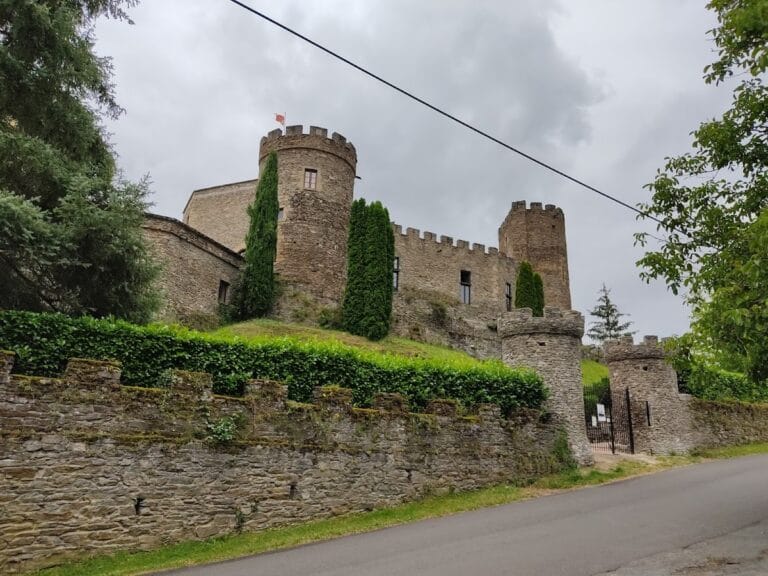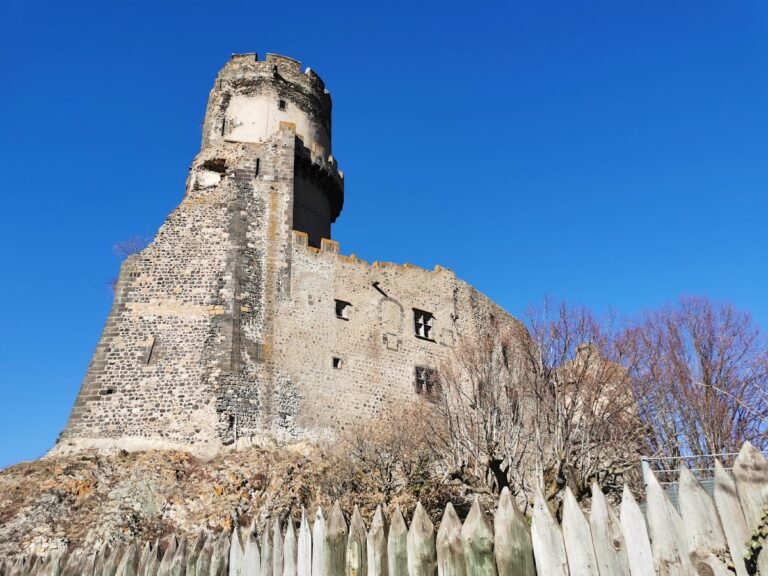Château Rocher: A Medieval Fortress in Saint-Rémy-de-Blot, France
Visitor Information
Google Rating: 4.4
Popularity: Low
Google Maps: View on Google Maps
Country: France
Civilization: Unclassified
Remains: Military
History
Château Rocher, also known as Château fort de Blot-le-Rocher, is located in the commune of Saint-Rémy-de-Blot in France. This medieval fortress was originally established by the peoples of medieval France to control key access points in the Sioule valley and oversee the strategic road crossing at the Menat bridge.
The earliest occupation of the site dates back to the 9th century when a motte castrale—a type of early fortified earthwork featuring a raised mound—was constructed. By the late 11th century, this early fortification was replaced by a stone castle, marking the beginning of a substantial stone presence at the location. Construction and successive expansions continued through the 13th century, particularly following the conquest of the Auvergne region by King Philip Augustus. These developments aimed to reinforce the castle’s defensive and surveillance capacities.
In 1169, the land of Blot was granted by Archambaud IV as an apanage—an estate granted to a younger son without dividing the main inheritance—to his son Pierre de Bourbon, who then became known as Pierre de Blot, founding the Blot noble line. Later, between 1300 and 1350, this family merged by marriage with the Chauvigny lineage, integrating the castle’s lordship into this family branch.
During the turbulent years of the Hundred Years’ War, Château Rocher found itself on the contested border near English-held territories. In 1365, the castle fell into the hands of Bertucat d’Albret, a mercenary acting under the command of Edward III of England. His forces captured and plundered the fortress, highlighting the castle’s military significance at this time.
Despite continuous improvements to the castle’s defenses and living quarters up until the late 15th century, its military relevance declined during the 16th century. Pierre de Chauvigny de Blot chose to construct a more accessible residence nearby, leading to Château Rocher’s gradual abandonment as a primary domicile and fortress.
The Chauvigny de Blot family maintained control of the estate until the end of the 18th century, when Gilbert de Chauvigny de Blot transferred ownership to his nephew, Hugues de Champs. Eventually, the castle passed into the hands of Marie Adélaïde Delpoux de Nafines, who was instrumental in securing its status as a protected historic monument in early 1913.
Remains
Perched at an altitude of 438 meters on a cliff rising approximately 150 meters above the Sioule river, Château Rocher commands extensive views over the valley and the vital crossing at Menat. Built predominantly of masonry, the fortress is arranged to maximize natural defenses offered by the steep cliffside and integrates multiple layers of fortification.
Entry to the castle was tightly controlled through a sequence of three defensive barriers. The first was a gateway leading into an outer courtyard. Beyond this, access continued over a movable, or draw, bridge constructed on a pile spanning a water-filled moat, opening into the outer enclosure of the castle. The third stage comprised a barbican—a fortified outpost protecting the main gate—that featured its own drawbridge, ensuring multiple fallback positions against attackers.
The castle’s defenses were reinforced with several towers. Three additional towers protected the entrance area, while three main towers stood sentinel along the eastern and northern faces of the complex. An inner secondary wall further enhanced the defenses along the eastern front, enclosing these towers within an extra layer of fortification.
Today, remnants of the castle include fragments of the main entrance door, portions of the outer walls, and surviving towers, all bearing witness to the strong masonry techniques employed in its construction. Archaeological investigation has also uncovered terracotta pipes at the site, which are thought to have conveyed water to a cistern, suggesting the castle’s sophisticated approach to water storage and supply.
Though the fortress remains in ruins, stabilization work overseen by local conservation groups has preserved these features in situ. The layers of defenses and ruins combine to illustrate the castle’s original strength and complexity, reflecting its role as a medieval military and administrative center.









